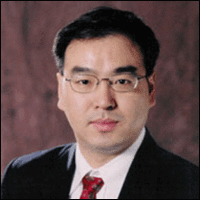Engineers’ groundbreaking discovery points to a new route to create thermal superconductors
The relentless increase in heat loads imposed on devices in modern technologies is driving renewed interest among engineers and materials scientists in the area of heat transfer. A key challenge is finding approaches to enhance the materials’ capability of conducting heat.

A team of engineers led by Vanderbilt mechanical engineering Professor Deyu Li and his former graduate student Lin Yang (PhD’19), now a postdoctoral research fellow at the Lawrence Berkeley National Laboratory, have shown experimentally that the thermal conductivity of a special kind of ultra-thin nanowires becomes divergent with the wire length.
They show that the thermal conductivity of quasi-one-dimensional van der Waals crystal niobium triselenide (NbSe3) nanowires increases continuously following a 1/3 power law length dependence (or superdiffusive transport) beyond a record level of 42.5 microns, suggesting a new route of creating a type of thermal superconductors with thermal conductivity values higher than that of any known materials.
Their groundbreaking work has been published online, Observation of superdiffusive phonon transport in aligned atomic chains, in the journal Nature Nanotechnology.
The results provide experimental evidence to a legendary numerical modeling work carried out on the first-generation electronic computer more than 65 years ago by Enrico Fermi, John Pasta, Stanislaw Ulam and Mary Tsingou—known as the FPUT paradox—that sparked a chaos theory revolution in modern science. The subject of heat conduction was believed to be a key motivation for FPUT’s study.
According to the FPUT paradox, the thermal conductivity of one-dimensional atomic chains would keep increasing with the chain length, which has been further demonstrated by numerous theoretical studies. However, so far, no experimental data have been obtained to prove the concept. In fact, the divergent thermal conductivity of one-dimensional atomic chains has been thought to be of academic interest only because, in reality, it is almost impossible to achieve isolated single atomic chains of sufficient length.

In their paper, Yang, Li and co-workers take advantage of a unique nature of NbSe3 nanowires, covalently bonded atomic chains assembled together by weak inter-chain van der Waals interactions. It is discovered that when the size of NbSe3 nanowires becomes less than 26 nanometers (nm), the wire thermal conductivity starts to increase sharply as the wire diameter further reduces, a phenomenon exactly opposite to the so-called classical size effect.
They further show that as the wire size reduces, the bonding strength along the covalently bonded atomic chains gets enhanced dramatically, which renders lattice vibrations (phonons) confined to the atomic chains, i.e., becomes one-dimensional. This experimental realization of one-dimensional phonon dominant thermal transport along the van der Waals crystal nanowires enabled the first observation of superdiffusive transport of one-dimensional phonons. “The results are what I have dreamed to obtain since I worked on thermal transport through nanowires when I was a Ph.D. student,” said Li.
Thermal transport is critical for the proper functioning of various electronic and energy conversion devices. “The observation of superdiffusive phonon transport in van der Waals crystal nanowires of sizes much larger than single atomic chains not only challenges the classical theory of superdiffusive phonon transport but also points out the possibility of taking advantage of this phenomenon to fabricate thermal superconductors for practical applications. After all, it is possible to fabricate arrays of nanowires of ~ 10 nm diameters as heat dissipation materials,” said Yang.
Li is director of the Micro/Nanoscale Thermal-Fluids Laboratory in the Department of Mechanical Engineering. His research is focused on experimental and numerical studies of thermal conductivities and thermoelectric properties of nanostructures, and development of novel devices for energy conversion and biomedical applications such as micro and nanofluidic lab-on-a-chip devices. The paper’s co-authors at Vanderbilt are Yi Tao, Zhiliang Pan, Yang Zhao, Qian Zhang, and Yaqiong Xu. Other authors are Yanglin Zhu, Ke Wang, and Zhiqiang Mao at Pennsylvania State University; Manira Akter and Terry T. Xu at the University of North Carolina at Charlotte; Renkun Chen at the University of California-San Diego; and Yunfei Chen at the Southeast University in China.
This research is supported by National Science Foundation grants DMR-1532107 and CBET-1805924 awarded to Li.
Contact: Brenda Ellis, 615 343-6314
brenda.ellis@vanderbilt.edu
